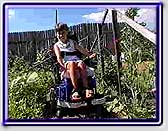

Interim Alternative Educational Settings:
Related Research and Program Considerations
by
George G. Bear, Ph.D.
University of Delaware
Abstract
The 1997 Amendments to the Individuals with Disabilities Education Act (IDEA) balances the need for safe schools for all children and protection of the rights of children with disabilities to a free appropriate public education (FAPE) and procedural safeguards. These amendments allow school personnel to order a change in placement to an interim alternative educational setting (IAES) for a student with a disability under certain circumstances. The primary purpose of this paper is to review research that may be of practical value to educators in developing and implementing state and local guidelines for IAESs.
The first section of this document briefly explains how the need for safe schools and the right to FAPE might conflict when students with disabilities are suspended or expelled from school. The next section reviews the purposes and features of IAESs and their potential implications for schools. Finally, the paper devotes primary attention to linking assessment with interventions of demonstrated effectiveness.
Multiple factors influence the behaviors of students who are subject to disciplinary action, such as placement into an IAES. For example, three behaviors specifically targeted in IAESs —carrying a weapon to school or a school function; knowingly possessing or using illegal drugs or selling or soliciting the sale of a controlled substance at school or a school function; and behavior determined by a hearing officer to be substantially likely to injure self or others—are typically influenced by a complex interaction of various personal and environmental factors, including a student’s thinking, emotions, social skills, family, teachers, school, and community.
As shown by research discussed in this document, for interventions to be effective in both the short- and long-term, they must target as many of the factors mentioned above as feasible. That is, interventions should be comprehensive, broad-based, and enduring. It is unrealistic to expect most IAESs to deliver such interventions, especially since a student’s placement in an IAES is limited. It is realistic, however, to expect personnel at an IAES to begin interventions, while simultaneously working with the Individualized Education Program (IEP) team in planning and coordinating interventions that would continue after the student leaves the IAES. Without continued services, it is very likely that behavior problems will recur, especially among students with chronic patterns of antisocial behavior. The responsibility for delivering all interventions and their success, should not fall solely in the hands of the school. As discussed in this document, it is appropriate that such responsibility be shared by the school, home, community agencies, and the student.